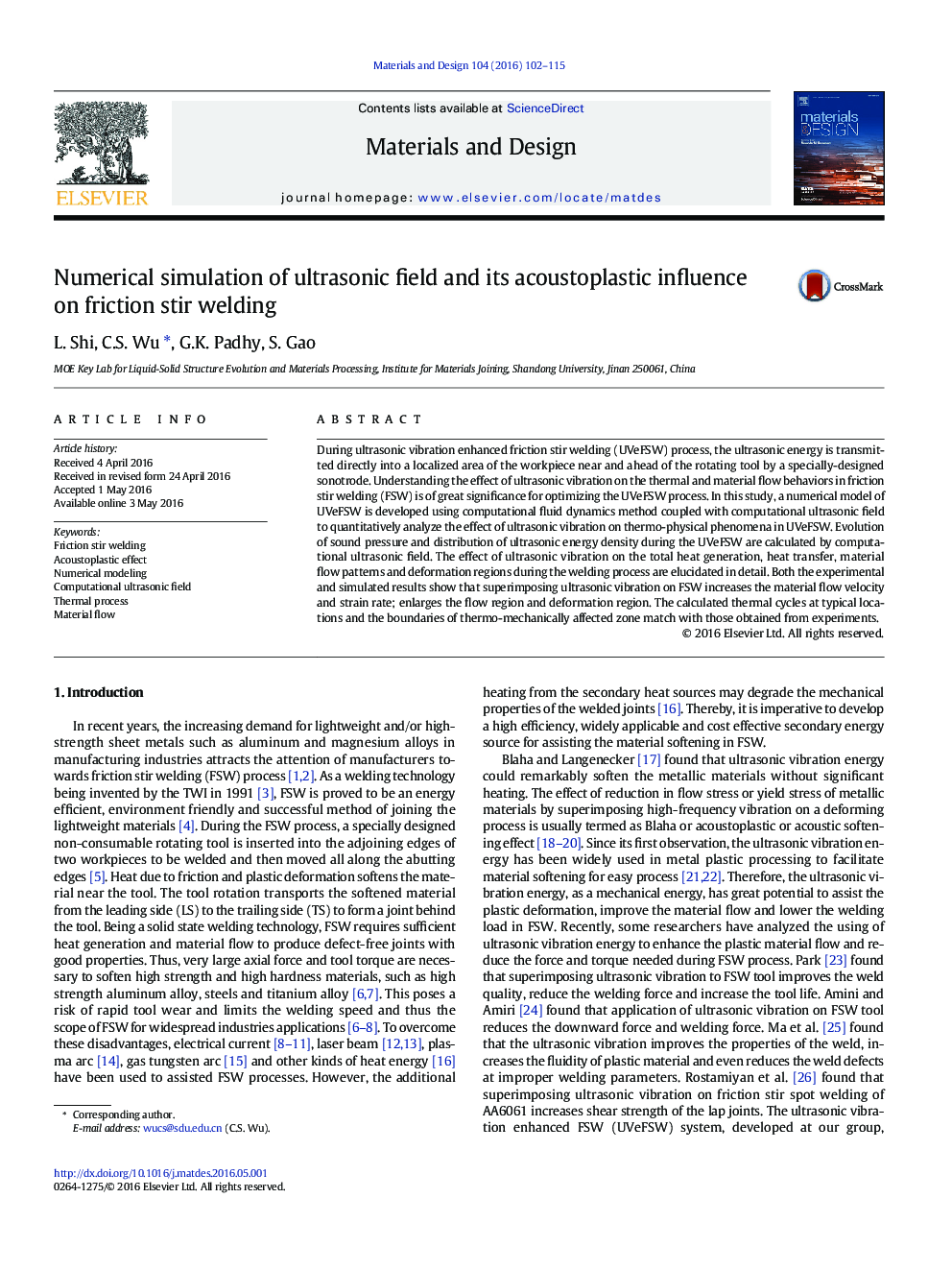| کد مقاله | کد نشریه | سال انتشار | مقاله انگلیسی | نسخه تمام متن |
|---|---|---|---|---|
| 827925 | 1470278 | 2016 | 14 صفحه PDF | دانلود رایگان |
• A model is developed for analyzing the ultrasonic field and its acoustoplastic influence on friction stir welding.
• Distribution of ultrasonic energy density in ultrasonic vibration enhanced friction stir welding is calculated.
• Ultrasonic vibration increases material flow velocity and strain rate in friction stir welding.
• Ultrasonic vibration enlarges the flow region and deformation region in friction stir welding.
• Ultrasonic vibration enhances plastic material flow and refines grain size.
During ultrasonic vibration enhanced friction stir welding (UVeFSW) process, the ultrasonic energy is transmitted directly into a localized area of the workpiece near and ahead of the rotating tool by a specially-designed sonotrode. Understanding the effect of ultrasonic vibration on the thermal and material flow behaviors in friction stir welding (FSW) is of great significance for optimizing the UVeFSW process. In this study, a numerical model of UVeFSW is developed using computational fluid dynamics method coupled with computational ultrasonic field to quantitatively analyze the effect of ultrasonic vibration on thermo-physical phenomena in UVeFSW. Evolution of sound pressure and distribution of ultrasonic energy density during the UVeFSW are calculated by computational ultrasonic field. The effect of ultrasonic vibration on the total heat generation, heat transfer, material flow patterns and deformation regions during the welding process are elucidated in detail. Both the experimental and simulated results show that superimposing ultrasonic vibration on FSW increases the material flow velocity and strain rate; enlarges the flow region and deformation region. The calculated thermal cycles at typical locations and the boundaries of thermo-mechanically affected zone match with those obtained from experiments.
Figure optionsDownload as PowerPoint slide
Journal: Materials & Design - Volume 104, 15 August 2016, Pages 102–115
